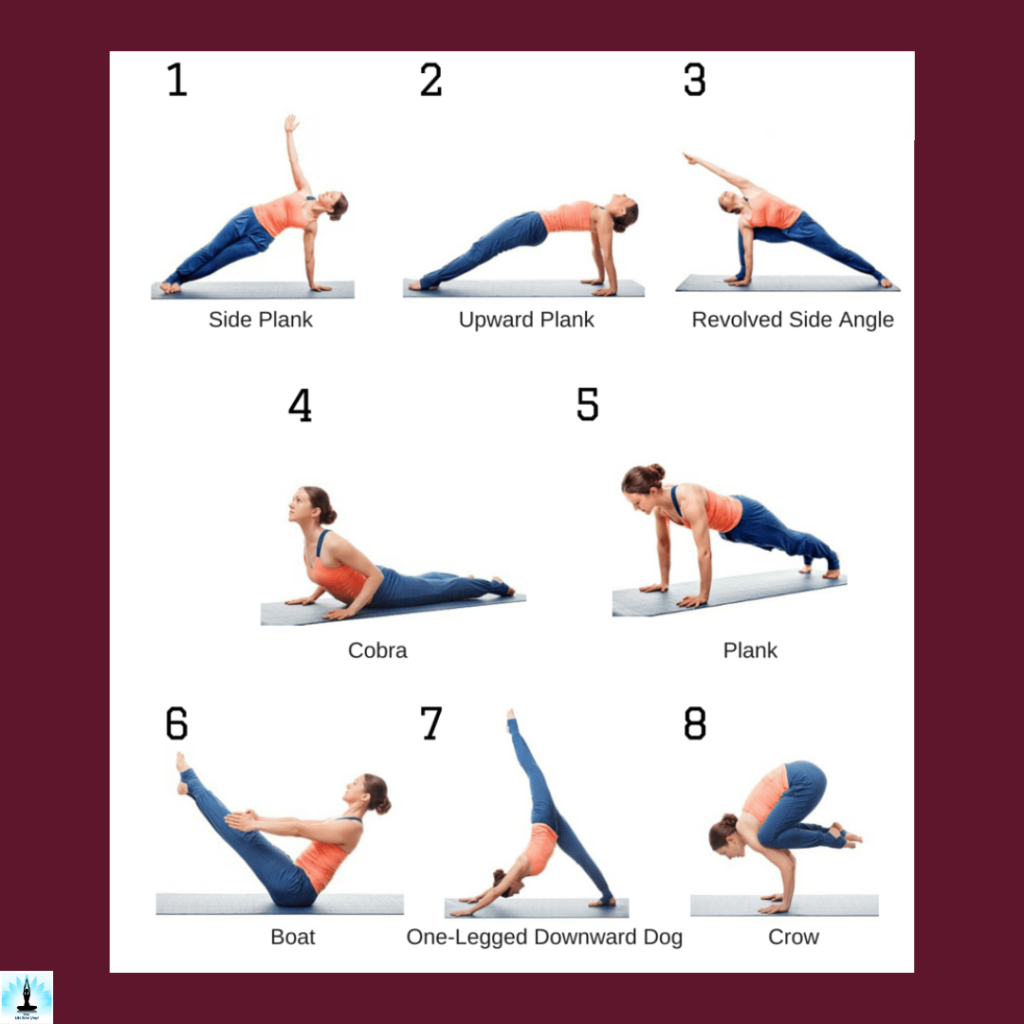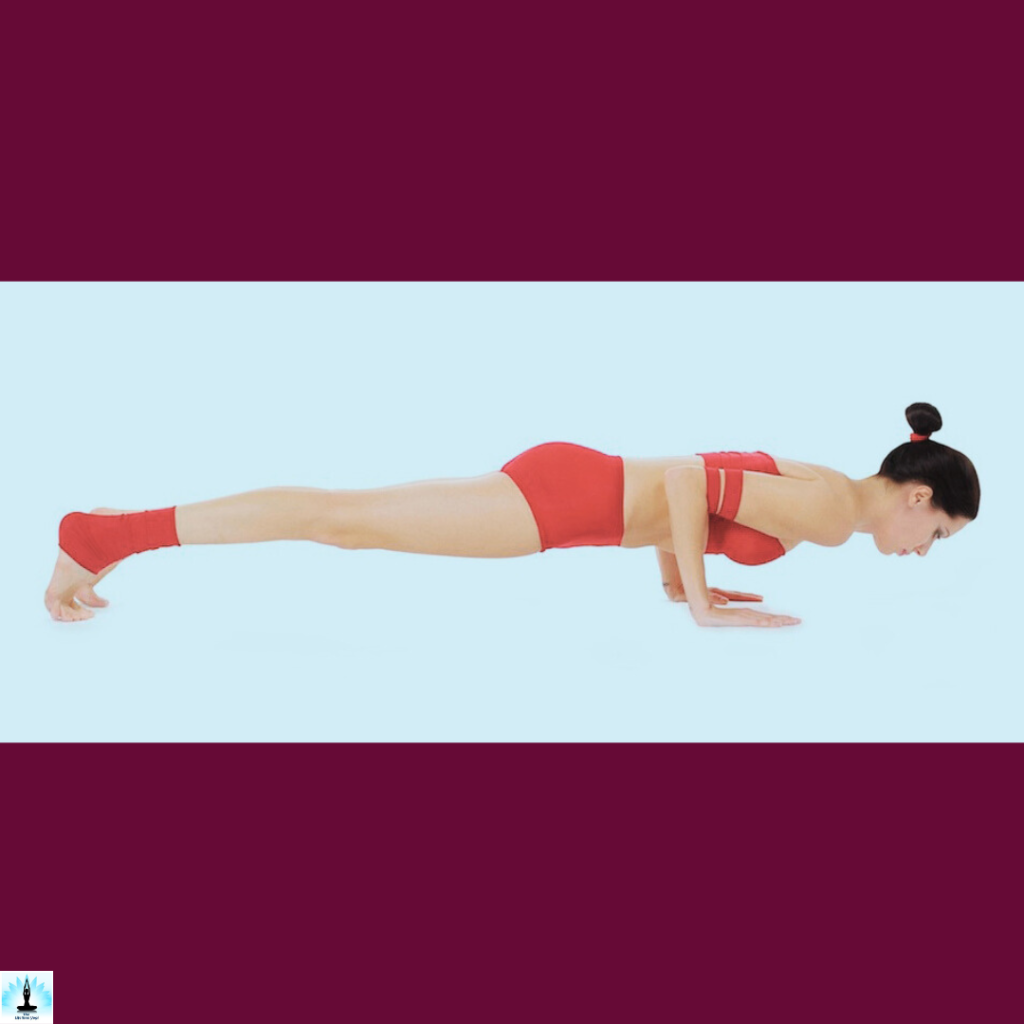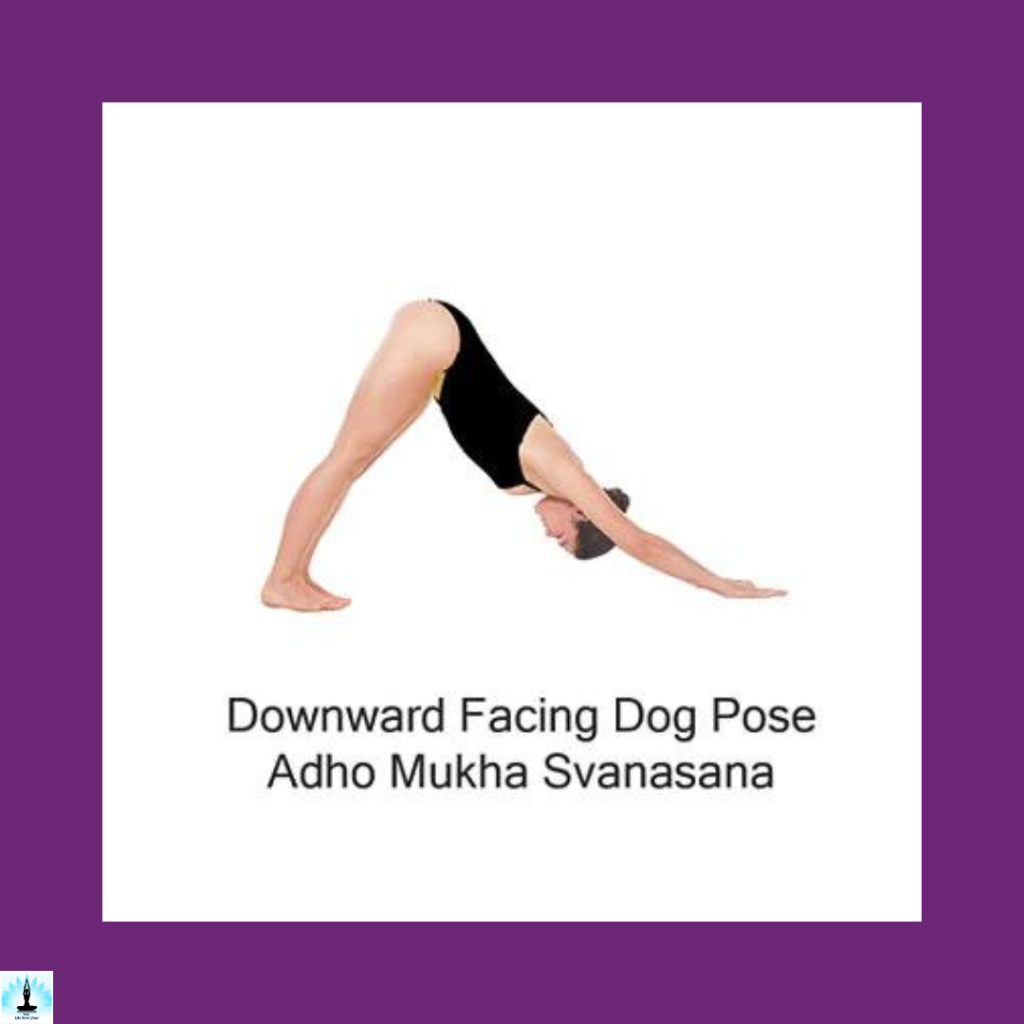Introduction – Opening the Power Within -The Best Yoga Poses for Core Strength
In the pursuit of overall fitness and well-being, a strong core is often considered the foundation. Beyond aesthetic benefits, a robust core contributes to stability, balance, and enhanced functional movement. Yoga, with its holistic approach to physical and mental wellness, offers a myriad of poses that specifically target and strengthen the core. Let’s delve into the world of yoga and uncover some of the best poses to ignite and fortify your core strength.
Table of Contents
What Yoga Poses Help with Core Strength?

Engaging in specific yoga poses is an excellent way to enhance core strength.
Poses such as Plank, Boat Pose, Downward-Facing Dog, and Warrior III specifically target the core muscles. These poses require stability, balance, and controlled movements, effectively building strength in the abdominal, back, and pelvic muscles.
Consistent practice of these poses can contribute to a stronger and more resilient core.
How Can I Improve My Core Strength?
Improving core strength involves a combination of targeted exercises and overall fitness practices. Incorporating yoga poses that focus on the core, such as Plank, Bridge Pose, and Boat Pose, is one effective method. Additionally, integrating strength training exercises, like crunches and leg raises, into your routine can provide a well-rounded approach.
Consistency is key, so regular practice of these exercises, along with a healthy lifestyle, contributes to gradual and sustainable improvements in core strength.
How Do I Build My Core for Yoga?
To build your core for yoga, it’s essential to include a variety of core-strengthening exercises in your routine.
Incorporate yoga poses like Boat Pose, Side Plank, and Plank into your practice. Complement this with exercises outside of yoga, such as bicycle crunches, Russian twists, and leg raises, to target different areas of the core.
Gradually increase the intensity and duration of these exercises to progressively challenge your core muscles and promote strength development.
Can Yoga Tighten Your Abs?
Yes, yoga can contribute to tightening and toning the abdominal muscles. Yoga poses engage and work the core muscles, leading to increased muscle tone over time. The dynamic movements and isometric holds in various poses stimulate the muscles, promoting both strength and definition. However, achieving visible results also depends on factors like overall body fat percentage and diet.
What Are the Signs of a Weak Core?
Signs of a weak core include poor posture, lower back pain, difficulty maintaining balance, and challenges in performing certain physical activities. If you find it challenging to hold yoga poses that require core engagement or experience discomfort in the lower back during everyday movements, these could be indicators of a weaker core. Regularly incorporating core-strengthening exercises, including specific yoga poses, can address these issues.
Is Hatha Yoga Good for Core?
Yes, Hatha Yoga is beneficial for core strength. Hatha Yoga, a foundational style that focuses on physical postures and breath control, includes poses that engage and strengthen the core muscles. Poses like Plank, Boat Pose, and Mountain Pose in Hatha Yoga require stability and activate the core, making it an excellent practice for building overall core strength and stability.
Do Planks Strengthen Your Core?
Absolutely, planks are renowned for their effectiveness in strengthening the core. Plank variations, such as forearm plank and side plank, engage not only the abdominal muscles but also the back, shoulders, and legs. The isometric nature of planks requires the core muscles to work continuously to maintain stability, making them a fundamental exercise for core strength in yoga and general fitness.
How Do I Know If My Core Is Strong?
A strong core exhibits various signs, including the ability to maintain good posture effortlessly, stability during balance exercises, and ease in performing activities that require core engagement. If you can hold yoga poses like Plank, Boat Pose, and Side Plank with control and without excessive strain, it’s an indication of core strength. However, continuous improvement and maintaining overall fitness are essential for sustained core strength.
Should I Do Core or Yoga First?
The order in which you do core exercises and yoga depends on your personal preference and fitness goals. Some prefer to start with a brief core workout to activate the muscles before moving into a yoga session. Others prefer integrating core-focused yoga poses within their practice. Experiment with both approaches to determine what feels most effective and enjoyable for you.
Which Yoga Is Best for Whole Body?
Yoga styles that incorporate a combination of poses, emphasizing strength, flexibility, and balance, are best for targeting the whole body. Styles such as Vinyasa, Power Yoga, and Ashtanga involve dynamic sequences that engage various muscle groups. Additionally, styles like Hatha and Iyengar focus on alignment and balance, providing a comprehensive workout for the entire body.
Why Is My Core Strong but No Abs?
Having a strong core doesn’t always directly correlate with visible abdominal muscles. Factors such as body fat percentage play a crucial role in revealing the definition of the abdominal muscles. If you have a strong core but can’t see the abs, it might be necessary to focus on overall body fat reduction through a combination of a healthy diet and cardiovascular exercise to enhance muscle visibility. Additionally, genetic factors can influence the visibility of abdominal muscles.
8 Best Yoga Poses for Core Strength
Plank Pose (Phalakasana):

How to do it: Start in a push-up position, with your wrists directly under your shoulders. Keep your body in a straight line from head to heels, engaging your core muscles. Hold the position for 30 seconds to a minute, or longer as you build strength.
Boat Pose (Navasana):

How to do it: Sit on the floor, lean back slightly, and lift your legs, creating a V shape with your body. Keep your spine straight and extend your arms parallel to the floor. This pose challenges the abdominal muscles, helping to build strength and endurance.
Downward-Facing Dog (Adho Mukha Svanasana):

How to do it: Begin on your hands and knees, tuck your toes, and lift your hips toward the ceiling, forming an inverted V shape. This pose engages the entire body, including the core, while also stretching and strengthening the back.
Side Plank (Vasisthasana):

How to do it: From plank position, shift your weight onto one hand and rotate your body, stacking your feet on top of each other. Raise your top arm toward the ceiling. This pose targets the obliques and improves lateral strength.
Bridge Pose (Setu Bandhasana):

How to do it: Lie on your back, bend your knees, and place your feet hip-width apart. Press through your feet to lift your hips toward the ceiling. This pose engages the core, glutes, and lower back, promoting strength and flexibility.
Warrior III (Virabhadrasana III):

How to do it: From a standing position, shift your weight onto one leg and extend the other leg behind you, parallel to the floor. Simultaneously, reach your arms forward. This pose challenges the core’s stability and enhances overall balance.
Leg Raises:

How to do it: Lie on your back and lift your legs toward the ceiling, keeping them straight. Lower them slowly toward the floor without letting them touch. This exercise targets the lower abdominal muscles, fostering strength and tone.
Chair Pose (Utkatasana):

How to do it: Stand with your feet together, bend your knees, and lower your hips as if you are sitting in an imaginary chair. This pose engages the entire core, especially the muscles around the spine.
FAQs on “What Are the Best Yoga Poses for Core Strength?”
Q: What are the best yoga poses for strengthening the core?
A: 1. Plank Pose (Phalakasana): This foundational pose engages the entire core and can be easily modified for all fitness levels.
Q: How do I perform Boat Pose (Navasana) to strengthen my core?
A: To perform Boat Pose, sit on the floor, lean back slightly, and lift your legs, creating a V shape with your body. This pose targets the abdominal muscles and improves core strength and endurance.
Q: Is Downward-Facing Dog effective for core strength?
A: Yes, Downward-Facing Dog is a versatile pose that not only stretches the entire body but also engages the core, promoting strength and stability.
Q: Can Side Plank help target specific core muscles?
A: Absolutely. Side Plank targets the obliques and helps improve lateral strength. Shift your weight onto one hand while maintaining a straight line from head to heels for optimal benefits.
Q: What is the significance of Bridge Pose (Setu Bandhasana) for core strength?
A: Bridge Pose engages the core, glutes, and lower back. This pose not only strengthens the core muscles but also promotes flexibility in the spine.
Q: How does Warrior III contribute to core strength?
A: Warrior III challenges the core’s stability and enhances overall balance. By lifting one leg and reaching the arms forward, you engage the core muscles to maintain the pose.
Q: Are leg raises effective for core strengthening?
A: Yes, leg raises target the lower abdominal muscles. Lie on your back, lift your legs toward the ceiling, and lower them without letting them touch the floor for an effective workout.
Q: Can Chair Pose (Utkatasana) help with core engagement?
A: Chair Pose is excellent for engaging the core, especially the muscles around the spine. By maintaining a seated position, you activate and strengthen the core muscles.
Q: How often should I practice these core-strengthening yoga poses?
A: Consistency is key. Aim for at least 3-4 sessions per week, gradually increasing the duration and intensity as your core strength improves.
Q: Can beginners incorporate these poses into their yoga practice?
A: Absolutely. Many of these poses have modifications, making them accessible for beginners. Start with the basics and gradually progress as you build strength and flexibility.
Q: How long does it take to see results in core strength with regular yoga practice?
A: Results vary, but with consistent practice, you may begin to notice improvements in core strength within a few weeks. Patience and regularity are essential for long-term benefits.
Conclusion
Incorporating these yoga poses into your routine can lead to a stronger, more resilient core. Consistency is key, so practice these poses regularly to experience the full spectrum of benefits, from improved posture and balance to enhanced overall strength and vitality. Embrace the journey of cultivating core strength through the ancient wisdom of yoga, and witness the transformative power it brings to your physical and mental well-being.
References
- Jain, Andrea (2016). “Modern Yoga”. Oxford Research Encyclopedia of Religion. Oxford University Press. doi:10.1093/acrefore/9780199340378.013.163. ISBN 9780199340378.
- De Michelis, Elizabeth (2007-10-16). “A Preliminary Survey of Modern Yoga Studies”. Asian Medicine. 3 (1): 2–3. doi:10.1163/157342107×207182. ISSN 1573-420X. S2CID 72900651.
- De Michelis 2004, pp. 187–189.
- De Michelis, Elizabeth (2007). “A Preliminary Survey of Modern Yoga Studies” (PDF). Asian Medicine, Tradition and Modernity. 3 (1): 1–19. doi:10.1163/157342107X207182.
- Singleton 2010, pp. 18–19.
- Mohan, A. G.; Mohan, Ganesh (29 November 2009). “Memories of a Master”. Yoga Journal. Archived from the original on 6 March 2010.
- Singleton, Mark (4 February 2011). “The Ancient & Modern Roots of Yoga”. Yoga Journal.
